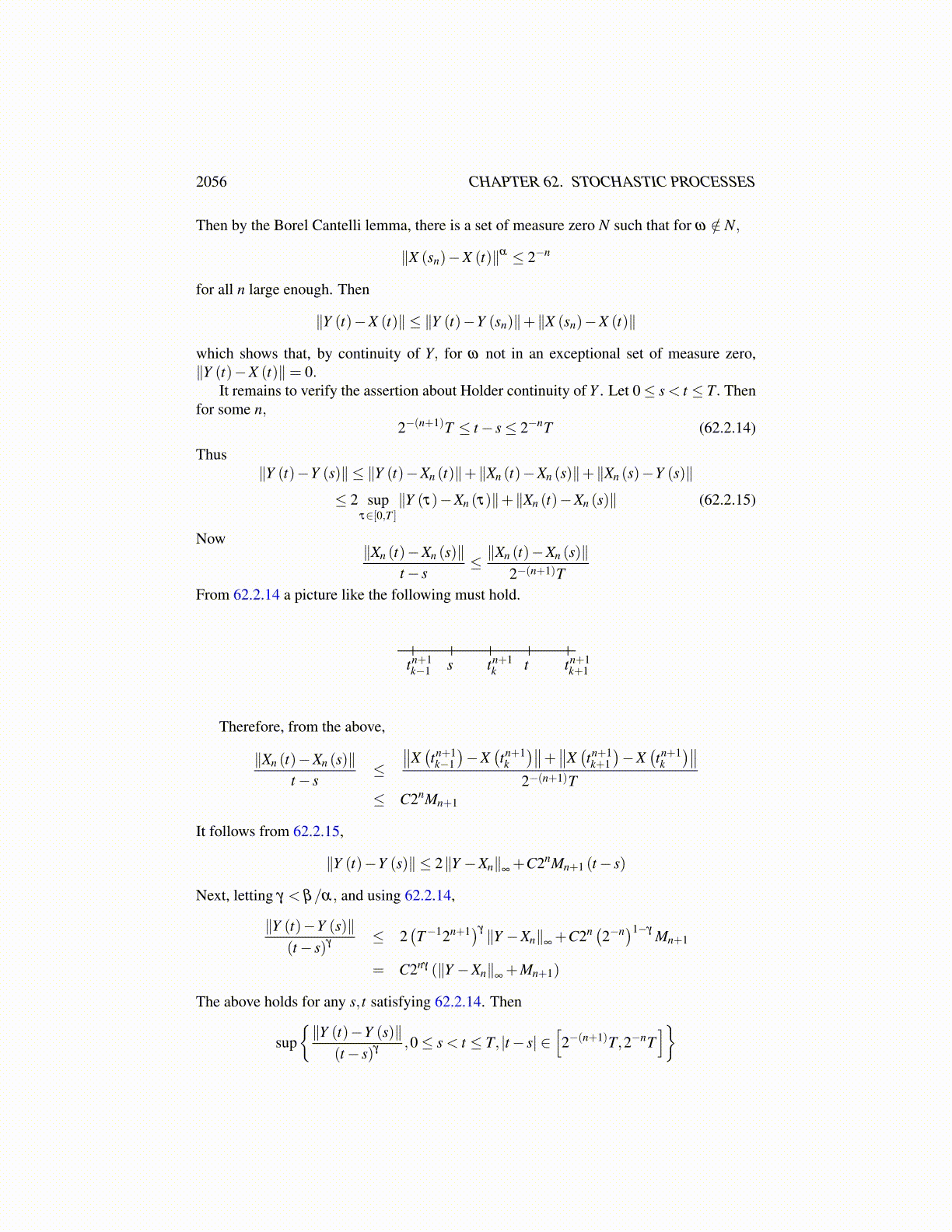
2056 CHAPTER 62. STOCHASTIC PROCESSES
Theorem 62.2.3 Suppose X is a stochastic process on [0,T ] having values in the Banachspace E. Suppose also that there exists a constant, C and positive numbers α,β ,α ≥ 1,such that
E(||X (t)−X (s)||α
)≤C |t− s|1+β (62.2.10)
Then there exists a stochastic process Y such that for a.e. ω, t → Y (t)(ω) is Hölder con-tinuous with exponent γ < β
αand for each t, P([||X (t)−Y (t)||> 0]) = 0. (Y is a version
of X .) Also
E(
sup0≤s<t≤T
∥Y (t)−Y (s)∥(t− s)γ
)≤C
where C depends on α,β ,T,γ .
Proof: The proof considers piecewise linear approximations of X which are automat-ically continuous. These are shown to converge to Y in Lα (Ω;C ([0,T ] ,E)) so it followsthat Y must be continuous for a.e. ω . Finally, it is shown that Y is a version of X andis Holder continuous. In the proof, I will use C to denote a constant which depends onthe quantities γ,α,β ,T . Let
{tnk
}2n
k=0 be a uniform partition of the interval [0,T ] so thattnk+1− tn
k = T 2−n. Now let
Mn ≡maxk≤2n
∥∥X (tnk )−X
(tnk−1)∥∥
Then it follows that
Mαn ≤
2n
∑k=1
∥∥X (tnk )−X
(tnk−1)∥∥α
and so
E (Mαn )≤
2n
∑k=1
C(T 2−n)1+β
=C2n2−n(1+β ) =C2−nβ (62.2.11)
Next denote by Xn the piecewise linear function which results from the values of X atthe points tn
k . Consider the following picture which illustrates a part of the graphs of Xn andXn+1.
tnk−1 tn
ktn+12k−2 tn+1
2ktn+12k−1
Then
maxt∈[0,T ]
∥Xn+1 (t)−Xn (t)∥ ≤ max1≤k≤2n+1
∥∥∥∥∥X(tn+12k−1
)−
X(tnk
)+X
(tnk−1
)2
∥∥∥∥∥